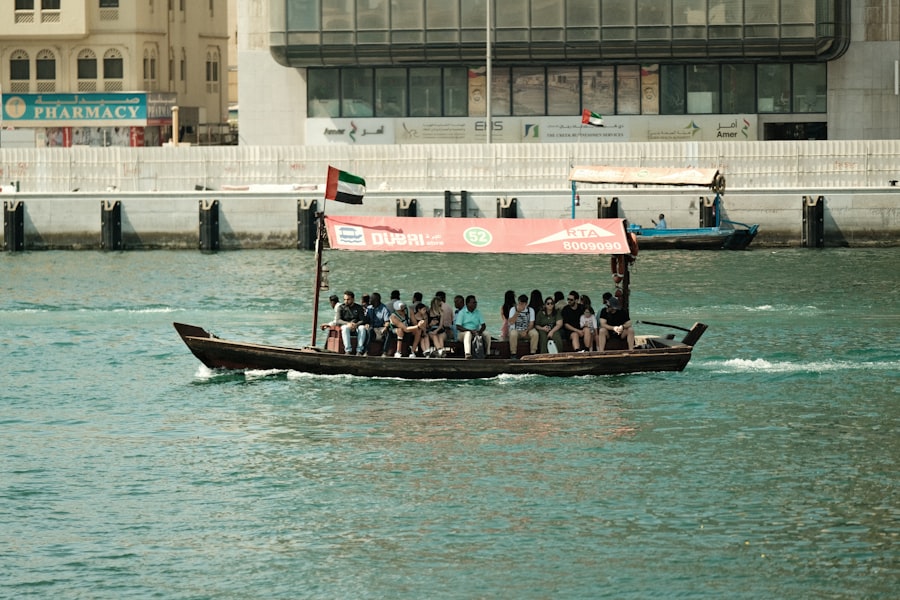Before embarking on the journey of purchasing a boat, it is crucial to first assess your personal needs and financial constraints. The type of boating experience you envision will significantly influence the kind of vessel you should consider. Are you looking for a boat primarily for fishing, leisurely cruising, or perhaps water sports?
Each activity demands different features and specifications. For instance, a fishing boat typically requires ample storage for gear and a sturdy hull, while a family cruiser might prioritize comfort and amenities such as seating and cabin space. By clearly defining your intended use, you can narrow down your options and focus on boats that align with your lifestyle.
Budgeting is another critical aspect of this process. Beyond the initial purchase price, prospective boat owners must account for ongoing costs such as maintenance, fuel, insurance, and storage. It is advisable to create a comprehensive budget that includes these factors to avoid any financial strain in the future.
For example, larger boats may require more expensive insurance policies and higher fuel consumption, while smaller vessels might be more economical but could lack the features you desire. Additionally, consider setting aside a contingency fund for unexpected repairs or upgrades. By understanding both your needs and budget, you can make informed decisions that will lead to a satisfying boating experience.
Key Takeaways
- Assess your boating needs and set a realistic budget before starting your search.
- Research various boat types to find one that matches your lifestyle and intended use.
- Choose a reputable seller or dealer to ensure a trustworthy purchase experience.
- Thoroughly inspect the boat for damages and verify its condition before buying.
- Understand all paperwork, secure financing and insurance, and plan for ongoing maintenance and storage.
Researching Different Types of Boats
Once you have a clear understanding of your needs and budget, the next step is to delve into the various types of boats available on the market. The diversity in boat designs can be overwhelming, but familiarizing yourself with the categories can help streamline your search. For instance, powerboats are known for their speed and efficiency, making them ideal for water sports enthusiasts or those who prefer quick trips across the water.
On the other hand, sailboats offer a more tranquil experience, appealing to those who enjoy the art of sailing and the connection to nature. In addition to powerboats and sailboats, there are specialized vessels such as pontoon boats, which are perfect for social gatherings on lakes due to their spacious decks and stability. If fishing is your primary interest, you might want to explore center console boats or bass boats, both designed with features that enhance fishing experiences.
Researching these categories not only helps you understand the advantages and disadvantages of each type but also allows you to identify which features are essential for your intended use. Online forums, boating magazines, and local boat shows can provide valuable insights into the latest trends and innovations in boat design.
Finding a Reputable Seller or Dealer

With a clearer idea of what type of boat you want, the next step involves finding a reputable seller or dealer. The importance of this step cannot be overstated; a trustworthy dealer can make the purchasing process smoother and more transparent. Start by seeking recommendations from fellow boaters or local boating clubs.
Personal experiences often provide insights that online reviews may not capture. Additionally, visiting local marinas can connect you with dealers who have established reputations within the community. When evaluating potential sellers, consider their experience in the industry and their inventory’s quality.
A reputable dealer should be knowledgeable about various boat types and willing to answer any questions you may have. They should also provide detailed information about the boats they sell, including maintenance history and any modifications made. It is beneficial to choose a dealer who offers post-purchase support, such as servicing or warranty options.
This level of commitment can significantly enhance your overall experience as a new boat owner.
Inspecting the Boat and Checking for Damages
| Inspection Item | Metric/Measurement | Acceptable Range | Notes |
|---|---|---|---|
| Hull Integrity | Cracks or Holes (count) | 0 | Check entire hull surface for visible damage |
| Hull Integrity | Soft Spots (location and size) | None | Press firmly to detect weak areas |
| Deck Condition | Loose or Missing Fasteners (count) | 0 | Inspect all deck fittings and hardware |
| Propeller | Dents or Bends (count) | 0 | Check for damage that may affect performance |
| Engine | Oil Leaks (presence) | None | Inspect engine compartment thoroughly |
| Electrical System | Corroded Connections (count) | 0 | Check battery terminals and wiring |
| Bilge Pump | Operational Test (pass/fail) | Pass | Ensure pump activates and removes water |
| Safety Equipment | Condition of Life Jackets (count usable) | All required | Verify all safety gear is present and functional |
Once you have identified a potential boat, conducting a thorough inspection is paramount before finalizing any purchase. This step is crucial in ensuring that you are making a sound investment and not overlooking any hidden issues that could lead to costly repairs down the line. Begin by examining the exterior of the boat for any signs of damage or wear.
Look for cracks in the hull, signs of rust on metal components, or fading paint that could indicate prolonged exposure to harsh conditions. In addition to visual inspections, it is advisable to conduct a sea trial if possible. This allows you to assess the boat’s performance firsthand—how it handles in the water, its speed capabilities, and how comfortable it feels during operation.
Pay attention to any unusual noises or vibrations that may arise during this trial; these could be indicators of underlying mechanical issues. Furthermore, consider hiring a marine surveyor for an expert opinion on the boat’s condition. A surveyor can provide an unbiased assessment and help identify any potential problems that may not be immediately visible to an untrained eye.
Negotiating the Price and Terms
Once you are satisfied with the condition of the boat, it’s time to enter into negotiations regarding the price and terms of sale. This stage can often feel daunting, but being well-prepared can empower you during discussions with the seller. Start by researching comparable boats in your area to establish a fair market value for the vessel you are interested in.
This information will serve as leverage during negotiations and help you avoid overpaying. When negotiating, be clear about your budget constraints while remaining open to discussion about terms such as payment plans or included accessories like safety gear or electronics. It’s essential to approach negotiations with a collaborative mindset rather than an adversarial one; this can foster goodwill between you and the seller, potentially leading to better terms for both parties.
If the seller is unwilling to budge on price, consider asking for additional perks such as extended warranties or free maintenance services as part of the deal.
Understanding the Paperwork and Legalities

Navigating the paperwork involved in purchasing a boat can be complex but is essential for ensuring that your ownership is legally recognized and protected. The first document you will encounter is typically the bill of sale, which serves as proof of purchase and should include details such as the purchase price, date of sale, and both parties’ signatures. It is crucial that this document accurately reflects all agreed-upon terms to avoid disputes later on.
In addition to the bill of sale, you will need to ensure that the boat has a clear title free from liens or encumbrances. This means verifying that previous owners have settled any debts associated with the vessel before transferring ownership to you. Depending on your location, there may also be registration requirements with local authorities or state agencies that must be fulfilled before you can legally operate your new boat on public waters.
Familiarizing yourself with these legalities early in the process can save you time and potential headaches down the line.
Securing Financing and Insurance
Financing your boat purchase is another critical aspect that requires careful consideration. Many buyers opt for loans specifically designed for marine purchases; these loans often come with favorable terms compared to traditional personal loans due to their secured nature. When seeking financing options, shop around for competitive interest rates from banks or credit unions that specialize in marine lending.
Be prepared to provide documentation such as income verification and credit history to facilitate the approval process. In tandem with securing financing, obtaining insurance coverage is essential for protecting your investment against unforeseen circumstances such as accidents or natural disasters. Boat insurance policies vary widely in terms of coverage options; some may cover only liability while others include comprehensive protection against theft or damage.
It’s advisable to consult with an insurance agent who specializes in marine insurance to tailor a policy that meets your specific needs. They can help clarify coverage limits, deductibles, and any additional riders that may be beneficial based on how you plan to use your boat.
Planning for Maintenance and Storage
Owning a boat comes with responsibilities that extend beyond just purchasing it; planning for maintenance and storage is vital for ensuring its longevity and performance over time. Regular maintenance tasks include checking fluid levels, inspecting electrical systems, cleaning hulls, and winterizing boats if they will be stored during colder months. Establishing a routine maintenance schedule can help prevent minor issues from escalating into significant problems that could require costly repairs.
Storage is another critical consideration; where you keep your boat can impact its condition significantly. If you live in an area with harsh winters or extreme weather conditions, investing in indoor storage may be wise to protect your vessel from environmental damage. Alternatively, if you plan on using your boat frequently during warmer months, consider renting a slip at a marina where it can be easily accessed while still being maintained properly.
Regardless of your choice, ensuring that your boat is stored correctly will contribute significantly to its overall lifespan and performance on the water.


